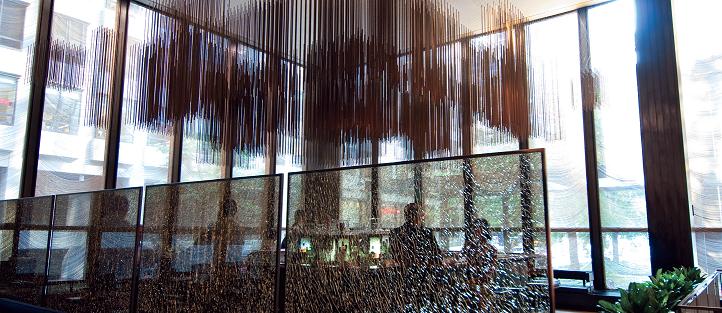
An American Landmark
One reason why The Four Seasons Restaurant is renowned worldwide is its architectural provenance. How many restaurants occupy space designed by two of architecture’s leading lights?
It was Phyllis Bronfman Lambert, daughter of Seagram Company founder Samuel Bronfman, who enlisted the team of Mies van der Rohe and Philip Johnson to take on the task of designing a new Seagram headquarters in Manhattan. Having studied architecture at New York University, Lambert took great interest in her father’s plans for the building. She strove to explain, she recalled, “what the business’s responsibility could mean in terms of architecture, and to convince [my father] of the validity of the new architectural thinking.”
The German-born American architect Mies van der Rohe was a driving force behind the International Style, with its unornamented, seemingly weightless glass-and-steel buildings of cantilever construction. His design of the Seagram Building (van der Rohe’s sole building in New York) stands as one of his crowning achievements. Philip Johnson, then architecture director at New York’s Museum of Modern Art and an acolyte of van der Rohe’s, designed the building’s spare and elegant interiors.
The fruit of their labors opened in 1958: a dramatic black-and-bronze “floating” skyscraper set 100 feet back from Park Avenue on a grand, wide-open plaza. And, to the good fortune of food lovers everywhere, an expansive space on the Seagram Building’s first floor would be the site of a restaurant: The Four Seasons, a landmark for more than a half century. In fact, it was officially designated as such by New York City’s Landmarks Preservation Commission in 1989—the only Manhattan restaurant ever to be so honored.